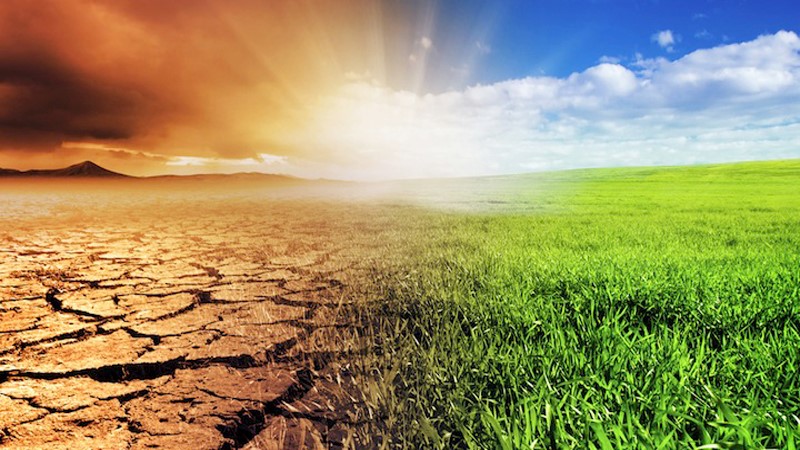
Rolling up the windows on Spaceship Earth
Burning fossil fuels and raising and feeding billions of factory farmed animals is killing wild and domesticated animals
- Wayne Pacelle
For years, animal protection groups have conducted life-saving campaigns to prevent people from leaving pets in cars when the sun is shining and the outside temperatures hover at 65 or above. In no time, a car with shuttered windows turns into a hothouse. Dog, cats, and even kids can succumb to intense heat in the time it takes someone to cash a check in a bank or dash into the supermarket for a couple of dinner items.
The Earth isn’t warming quite as fast or dramatically as a closed-up car on a hot day. But it is heating up according to hundreds of scientists who are studying the relationship between global temperatures and human industry.
Our atmosphere traps heat, and that’s generally been a positive thing in keeping us warm enough to thrive on the planet. But we’ve turned a positive feature of our planet’s thermoregulation system into a threat by burning fossil fuels and releasing other forms of carbon and methane into the atmosphere at self-destructive rates. In common parlance, we are rolling up the windows on Spaceship Earth.
The oceans absorb an enormous amount of heat, and they are warming faster than ever, according to the most recent measures. The hotter waters are bleaching and sterilizing coral reefs, which have long acted as the hubs of life and the rainforests of the oceans.
There’s also the matter of rising sea levels. The Earth’s salt waters are about to spill over onto our land masses because we are melting the Greenland ice sheet and other storehouses of ice.
Ice is also melting on the land. Our glaciers are retreating, and if there’s any better visual measure of global warming, this is it. Look at mountain glaciers from decades ago, and look at them now, and the glaciers are either gone or barely recognizable.
But it’s not just oceans, ice, reefs, glaciers, and other geophysical features that are feeling the effects of climate change.
Animals are too. They are gasping for air. They are dying.
In the boreal forests in the northern tier of the United States, which is the southern range for moose, these giant deer are perishing because of an unimaginable tick loads. The cold and snow once beat back the ticks, but now more of these hardy parasites are surviving the winters and literally sucking the life blood from these creatures.
Like so many Antarctic species, penguins depend on krill, but the biomass of these foundational food sources are diminishing. Penguins must travel farther to meet their caloric needs. With less food, which is harder to gather, mother penguins are often failing in their single-minded pursuit of raising their young.
Some of the most heartbreaking images in recent decades come from the Arctic, where polar bears have been seen clinging to small, broken ice rafts out in the open water. Polar bears depend on ice cover to hunt seals. As they search for ice floes that double as hunting grounds, they, too, expend essential energy that diminishes the odds of survival.
And lest we forget, we’re seeing more frequent, and more intense, hurricanes and forest fires. In describing the fires scorching California, former Governor Jerry Brown called the circumstance the “new abnormal.” These serial disasters are costing society billions in property damage and unimaginable loss of human life. But the effects on domesticated and wild animals are almost too big and too complicated to measure. Pets perish when homes burn to the ground or are washed away. Mountain lions and bears are high-profile victims of fires, but animals who live in trees or in the topsoil often don’t stand a chance.
In academic journals, and even news reports, climate change sometimes sounds like an abstraction. The critics of climate change cry foul when the narrative veers toward the emotional, and some writers, especially scientists, compensate by sounding dispassionate. They stick to describing macro-ecological processes.
But when Earth’s life support systems fail, it’s time to be emotional about the mass loss of life. If there’s anything to get emotional about, it’s something that earth-shaking. This loss of life is often less dramatic than a trophy hunter or a poacher shooting an elephant or a trapper mangling a bobcat in vise grip of a snare. But the cumulative effects of human behavior on the atmosphere have turned out to be an unyielding force, straining the ability of so many animals to live another day. Climate change is outpacing evolution, and it’s not a close race.
Raising billions of animals for food is one of the biggest causes of global warming. The good news is, if there is any, is that we have the ability, as individuals and as a society, to evolve our consumption patterns and to reduce the number of animals we are raising. It’s within our power to assess the problem and to take corrective action.
Demand that politicians act with a level of urgency that is proportional to the scale of the problem. Change your lifestyle in ways that matter, including by eating lower on the food chain.
If the bleaching of reefs and the melting of massive floes of ice aren’t enough to convince you to change, maybe the images of starving polar bears, parasitized moose, and the lost generation of penguins will be compelling enough to roust good people from complacency.
Wayne Pacelle, author of The Humane Economy: How Innovators and Enlightened Consumers Are Transforming the Lives of Animals, is president of The Center and founder of Animal Wellness Action.